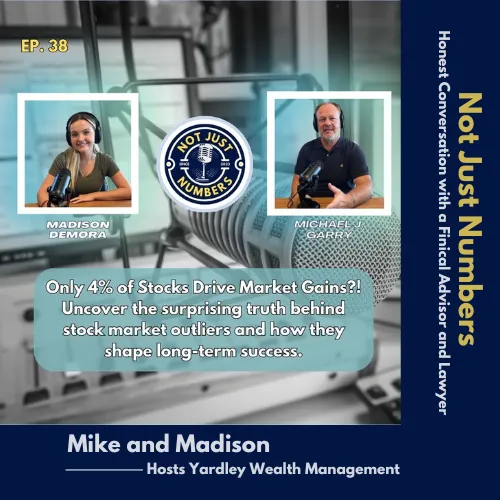Episode 38:The Hidden Drivers of Market Success: Understanding Stock Market Outliers.
Hosts: Madison Demora and Mike Garry
Episode Overview
In this episode, Mike Garry analyzes a fascinating study by Dr. Hendrik Bessembinder that reveals how just 4% of stocks account for all net wealth creation in the market from 1925 to 2023. The discussion explores the implications of this research for individual investors, the power of compound returns, and why broad market diversification remains crucial for long-term investment success.
Listen to Our Podcast On:
Timestamps
- 00:08 – 01:50 Introduction to episode topic:
- 01:51 – 03:16 – Creative Destruction of Capitalism
- 03:17 – 05:52 – Challenging Common Assumptions about Stock Market Investing
- 05:53 – 06:50 – Publicly Traded Stocks and Negative Returns
- 06:51 – 09:37 – Significance of Compounding & Identifying Future High Performing Stocks
- 09:38 – 11:38 – Impact on Diversification & Role of Technology Stocks
Follow Us on Social Media
Stay updated with the latest episodes and news by following us on social media:



